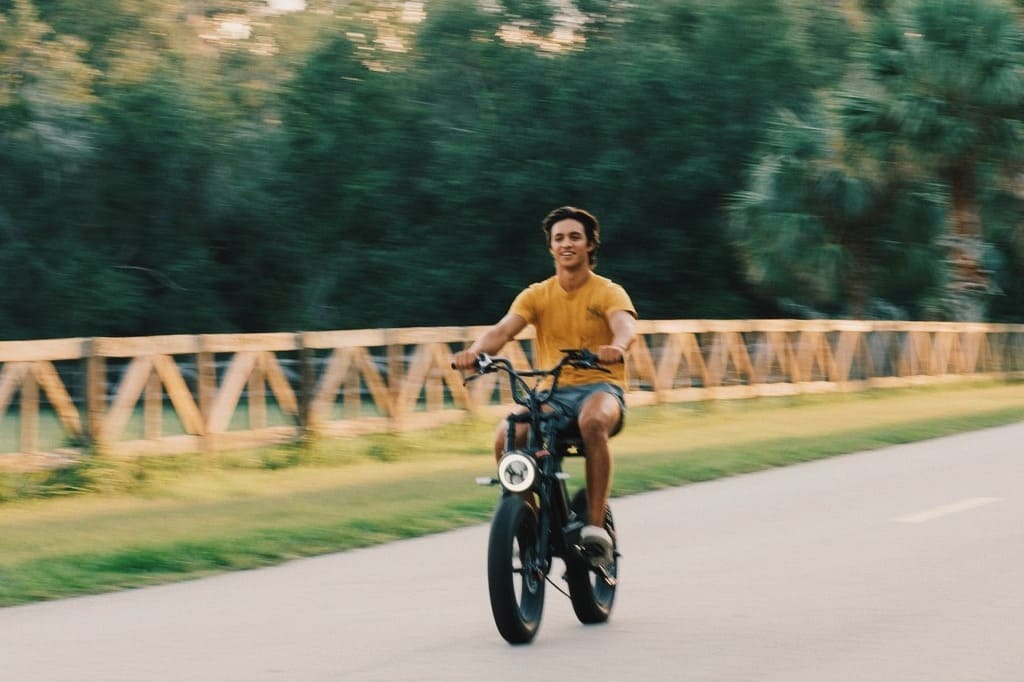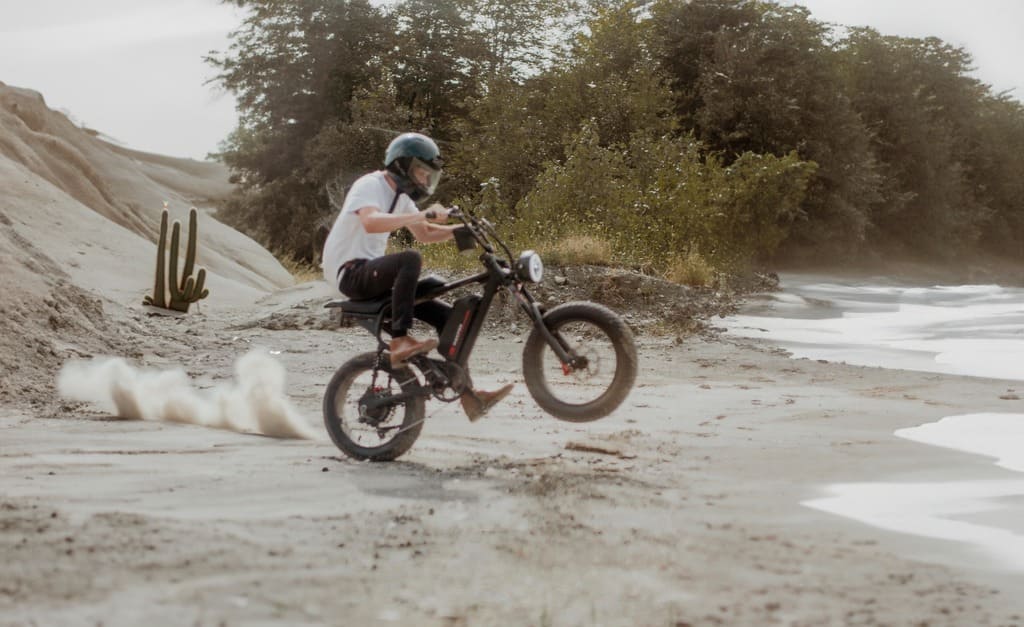Imagine this: you're zipping through the streets on an electric bike, the world blurring before your eyes with sights and sounds; it's exhilarating, eco-friendly, and efficient - but then suddenly, out of nowhere, comes another rider on theirs edging ahead in terms of speed! What gives? Well, buckle up for this fascinating dive into the fast-paced world of electric bikes to understand just why certain models outshine others when it comes to acceleration!
The Need for Speed: Understanding E-Bike Top Speeds

Electric bikes have revolutionized urban mobility, providing a greener and faster alternative to traditional transportation methods. But not all e-bikes offer equal top speeds; several key factors will determine just how fast yours can travel:
Motor Power: At the core of every electric bike lies its motor. Measuring in watts (W), its power is the primary indicator of its top speed; more wattage equals a faster bike. Unfortunately, however, legal limits in many countries cap e-bike motor power to ensure road safety - for instance, in the United States, this limit stands at around 750W to qualify as an e-bike; 20 mph (32 km/h) top speeds can be reached if using throttle modes and up to 28 mph (45 km/h).
Battery Capacity: Battery capacity is the lifeblood of your ride and will determine both how far and fast your bike can travel on each charge. A higher-capacity battery can supply sustained power to the motor and maintain higher speeds for longer. But larger batteries can add extra weight.
Bike Design and Weight: The aerodynamics of an e-bike's design can affect its speed. More aerodynamically designed bikes cut through the air more efficiently, reducing drag for higher speeds. Furthermore, the weight of components like the frame, battery, and components has an effect; lighter bikes require less power to accelerate and maintain high speeds.
Tires and Terrain: Both the type of tires used on an e-bike and its terrain have an effect on top speeds. Smooth, thin tires are best suited for riding on smooth pavement roads as they offer less resistance than thicker, knobbier tires designed for off-road use; similarly, flat, smooth surfaces offer faster speeds when compared with steep hills or rough terrain.
Rider Input and Gear Ratios: Although electric bikes offer pedal-assist and throttle modes, the rider's input can significantly impact its top speed. An increase in effort from the rider may result in higher speeds when pedaling-assisted mode is enabled; additionally, gear ratios play an integral part in how efficiently power is transferred between the motor (and legs of the rider) to wheels for acceleration and top speed effects.
Related Reading: Can Riding An Electric Bike Improve Your Mood?
Navigating the Legal Landscape of E-Biking
Electric bikes provide more than speed - they require knowledge of both speed and the rules of the road to be safe on your ride. Legal guidelines pertaining to them vary greatly between countries as well as between states within each nation - knowing these laws is crucial if one wishes to enjoy riding without violating local regulations.
E-Bike Classification
Electric bikes can often be classified based on their motor power and maximum speed capability. In the U.S., for instance, the Consumer Product Safety Act defines an electric bicycle as one equipped with a motor of 750 watts (1 horsepower or less) or less that has an operator weighing 170 pounds who rides solely using that motor at less than 20 mph on level pavement surfaces - this definition plays an essential part of both manufacturers' and riders' legal statuses as it determines where these bikes can legally ride legally.
Speed Limits
E-bike speed limits are often set in order to ensure both riders and pedestrians' safety. In the U.S., three classes of e-bikes define where and at what speeds riders may ride:
- Class 1: Pedal-assist only, with no throttle, and a maximum assisted speed of 20 mph.
- Class 2: Can be propelled solely by the motor, also capped at 20 mph.
- Class 3: Pedal-assist only, with no throttle, and a maximum assisted speed of 28 mph.
There are various rules regarding where different classes of e-bikes may be ridden, including bike paths, roadways, and bike lanes.
Helmet Laws and Age Restrictions
Some jurisdictions mandate helmet use by riders of electric bikes, especially younger riders or those riding faster models like Class 3. Additionally, certain areas set age minimums for riders of certain e-bike types.
Registration, Licensing, and Insurance
Most places treat e-bikes like bicycles in terms of registration requirements (no registration, license, or insurance are needed). Some areas may require them for higher-powered models that reach speeds similar to mopeds or scooters - always check your local laws first before embarking on your adventure!
The Takeaway
Electric bike laws emphasize the necessity of being aware and compliant. As more e-bikes gain in popularity, laws and regulations continue to evolve accordingly, providing enthusiasts and casual riders alike with opportunities to maximize the potential of their e-bikes while staying legal and safe.
Understanding the legal landscape allows riders to focus on what matters: the joy of riding, speed thrills, and exploring our world on an electric bicycle. Always double-check specific laws in your region, as these can change at any time with potentially unique stipulations - safe riding!
At Electric Bike Reviews, we take great pleasure in exploring electric bikes' top speeds. To ensure the experience remains enjoyable and convenient within safety regulations, keep these legal considerations at the forefront.
Speeding Ahead: Comparing Top E-Bike Models
Let’s take a look at 2 models from the best and most popular e-bike brand Macfox and their top speeds, taking into account all the factors we just covered:
- Macfox X1: Equipped with a 500W motor (750W peak), this electric commuter bike rides comfortably within legal limits and reaches top speeds of 25 mph, providing a smooth ride.
- Macfox X2: Designed for versatility, this off road electric bike can push speeds up to 28 mph with a 750W motor and 1000W peak power.

The Final Sprint: What's Your Speed Style?
Finding an e-bike suitable to your needs means taking more than speed into consideration when making your choice. Consider how and where you plan to use your e-bike, the typical terrain encountered, and local regulations regarding their usage - be it leisurely city rides, rugged mountain terrain, or speedster commuter use; an electric bike will meet them all and more! There's sure to be one waiting just for you out there somewhere.
Note that the journey is just as essential to success as its final goal, so choose wisely, ride safely, and embrace all of the freedom and fun associated with owning an electric bike.
FAQs
Mes, What is the legal maximum speed limit for electric bikes?
Legal top speeds vary between countries and even within regions within one nation, but generally, in the U.S., this maximum speed limit for throttle-controlled e-bikes is 20 mph, with pedal assist models reaching 28 mph in some instances.
Can I modify my e-bike to make it faster? A: Absolutely, any modifications can make your ride go faster.
Modifying electric bicycles for higher speeds may technically be possible, but doing so may void their warranties, make the bike illegal in certain jurisdictions, and increase the risk of accidents. Prioritize safety and legality.
To operate an electric bicycle, do I require any sort of special license?
No special permit or authorization is needed in order to ride one of these.
In most jurisdictions, an e-bike doesn't require special licensing as long as its speed falls within legal definitions and limits; however, it's always wise to check local laws and regulations.


















